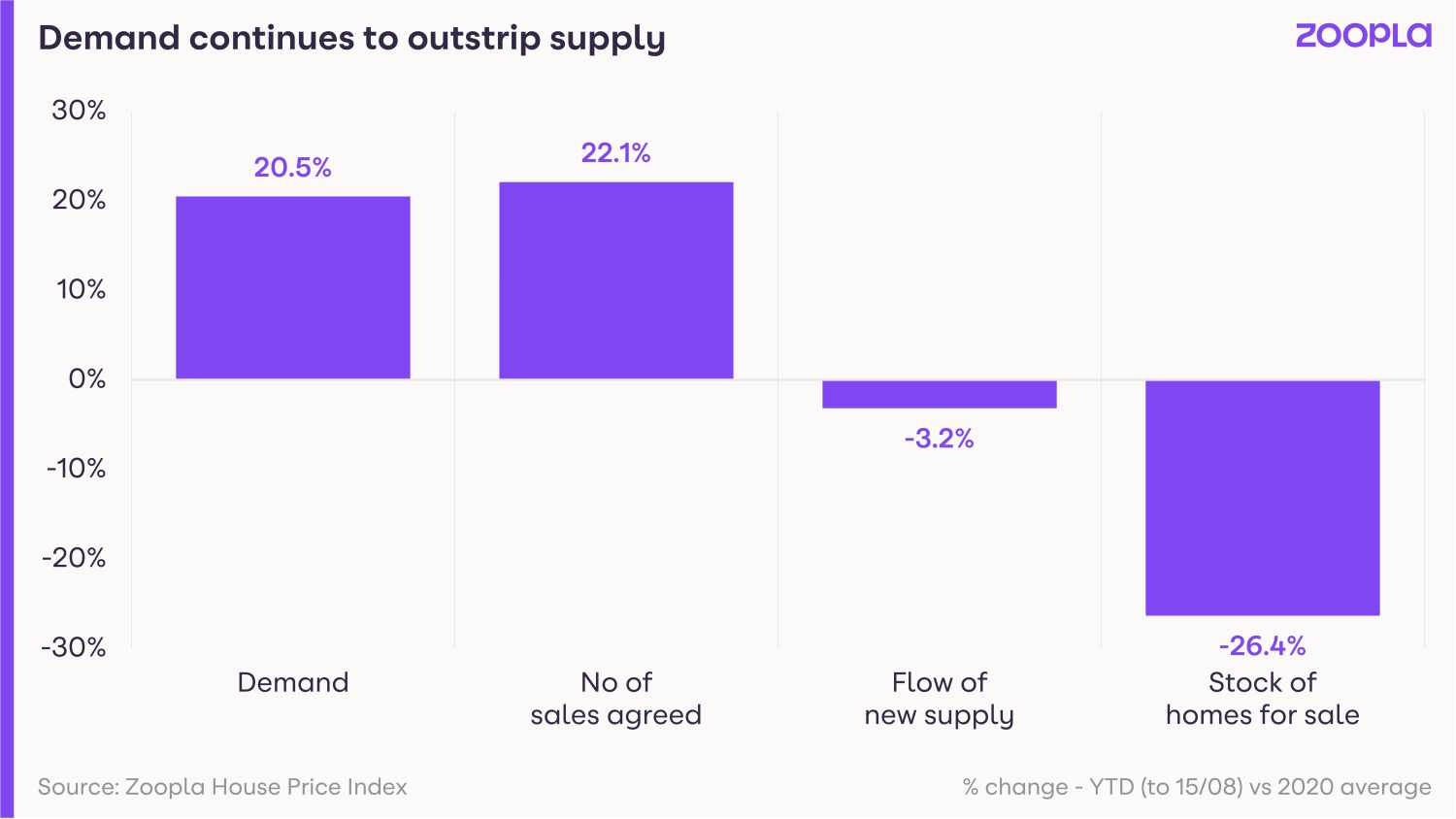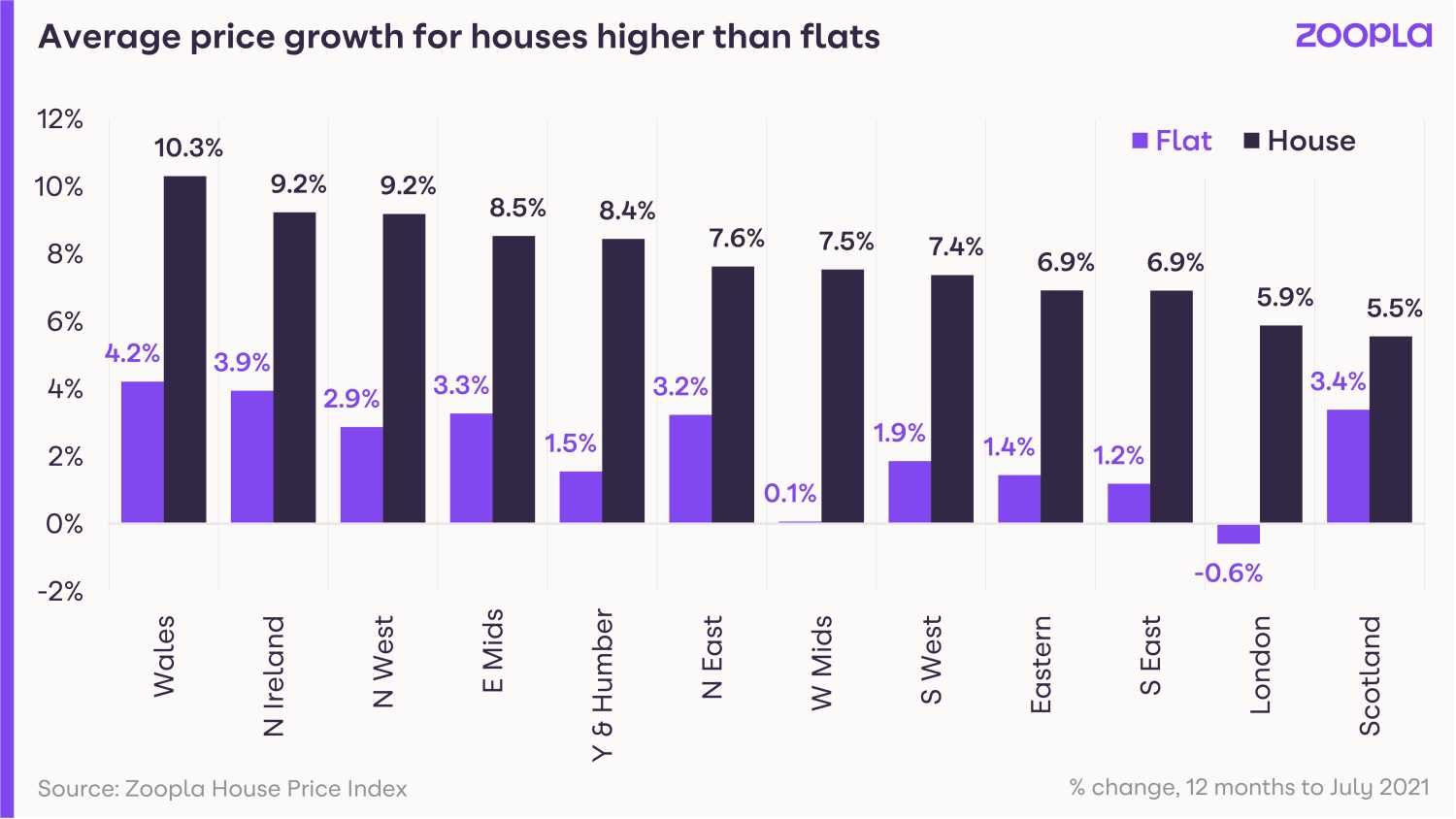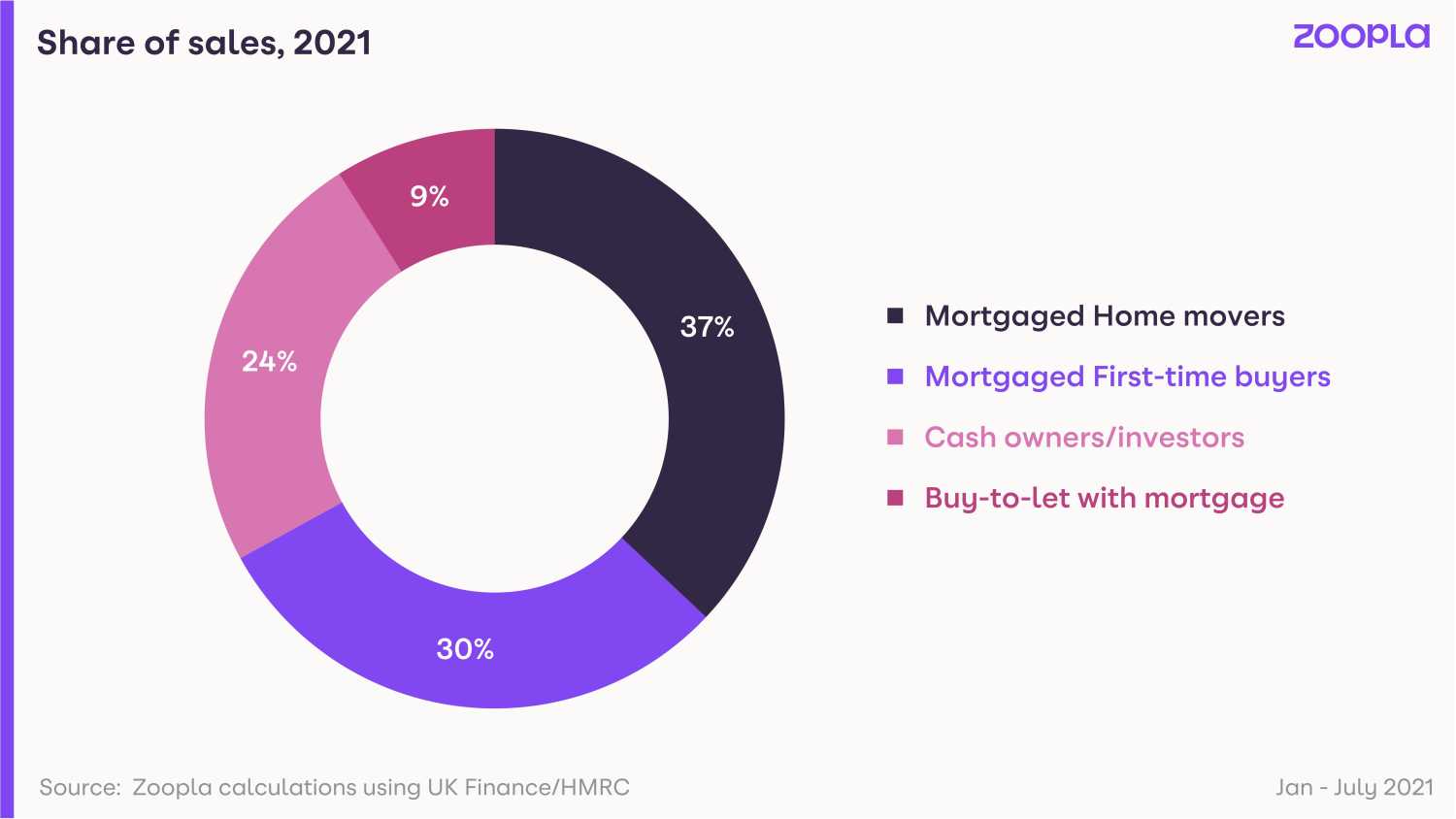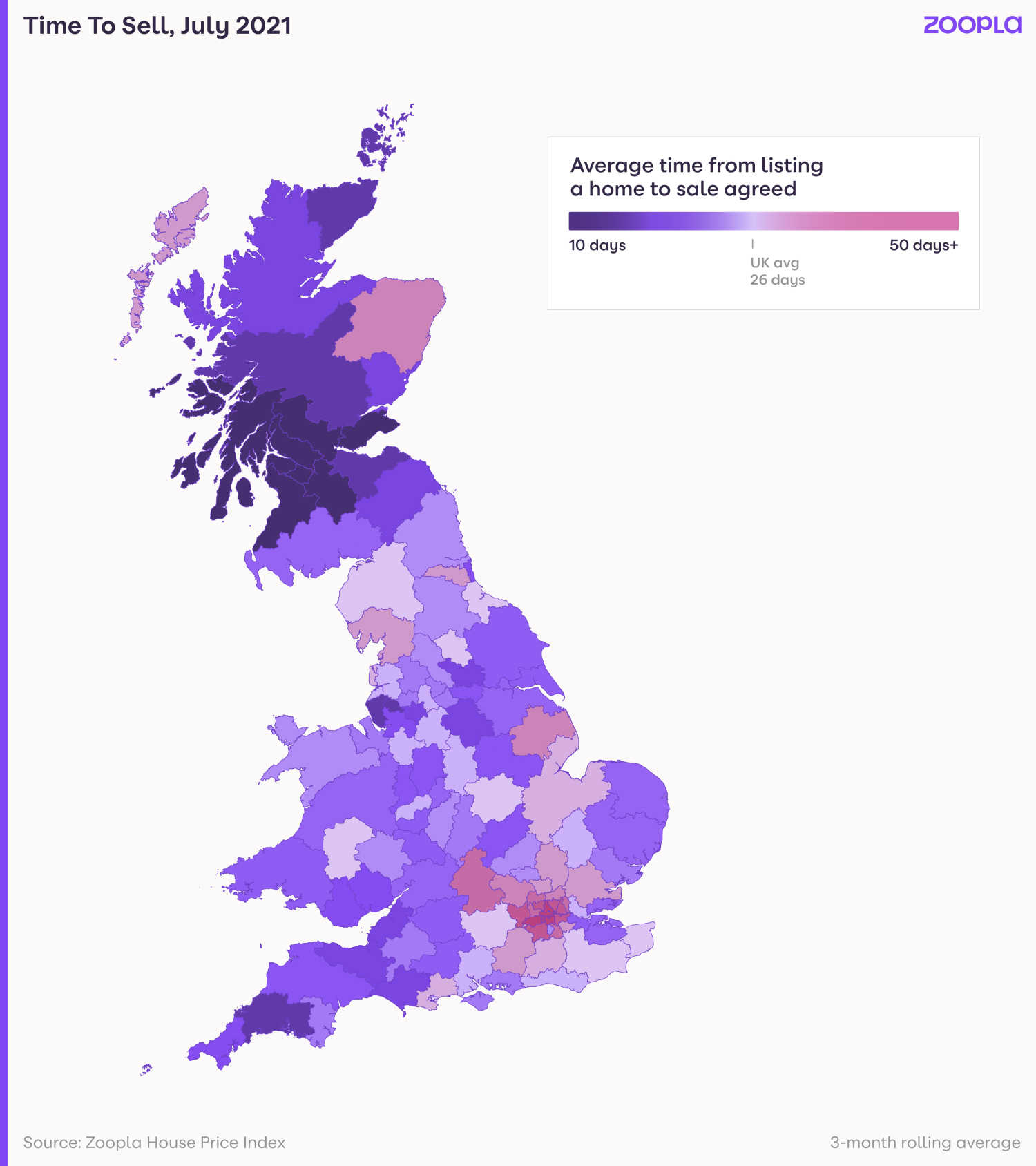Low supply and high demand create a sellers' market
The number of properties for sale has fallen to its lowest level for more than 6 years and is forecast to remain low well into next year.
The housing market faces an acute shortage of homes for sale as the supply of properties fails to keep pace with the current buying frenzy.
One in 20 homes changed hands during the past year driven by the stamp duty holiday and the pandemic-induced search for space.
The number of homes being put up for sale is failing to replenish those that are sold, however, leading to the most acute shortage of stock since 2015 when we first began tracking this measure.
The mismatch between supply and demand has created a sellers’ market, particularly for 3 and 4-bedroom family homes, which is pushing up house prices because homeowners can command the top price for their properties.
The pace of the market is also accelerating, with homes taking an average of just 26 days to sell, nearly half the 49 days they took in 2019, as a growing number of buyers compete for limited properties.
Scroll down to get more insight from our latest House Price Index report and find out what it could mean for you.
What’s happening to house prices?
Strong demand from buyers is continuing to put upward pressure on prices, with the average UK home seeing its value increase by 6% in the year to the end of July.
The increase, which has left the typical property costing £234,000, is more than double the 2.3% rate of growth recorded in the same month of 2020.
Regions in which affordability is less stretched continue to see the strongest house price gains, with Wales leading the way with growth of 9.4%, followed by Northern Ireland at 9% and the North West at 7.9%.

A similar pattern is evident at a city level, with Liverpool, where the average home costs £136,721, going up in price by 9.4% during the past year, while house prices in Manchester and Belfast have increased 7.7% and 7.5% respectively over the same 12 month period.
By contrast, property values in London have edged ahead by just 2.5%, although the rate of growth has increased from 1.9% in March.
How busy is the housing market?

Demand from potential buyers remains elevated, with the number of people looking to purchase a home 20.5% higher than the average for 2020.
Competition among buyers has been intensifying during the second half of last year and the first half of 2021, spurred on by the stamp duty holiday.
These high levels of demand have led to a 40% increase in sales in the 12 months to the end of June.
The high level of buyers in the market is not being matched by sellers, however, with the number of homes for sale down 26.4% than the average for 2020, and 33% lower than levels seen in 2018 and 2019.

What do buyers want?
The supply constraints are most evident for houses, in particular family houses of 3 or 4-bedrooms, and properties priced up to £350,000.
This shortage is reflected in the price of houses which jumped by 7.6% during the past year, compared with a gain of just 1.2% for flats.
Typically a homemover both buys and sells, creating demand and supply. But the current shortage is not being helped by increased activity among first-time buyers and property investors, who do not have a home to sell.
What could a sellers' market mean for you?

First-time buyers
Buying activity in this group has increased as lenders have become more willing to offer mortgages to people with smaller deposits.
As a result, if you are looking to purchase your first home, you can expect strong competition from others trying to get on to the property ladder, with first-time buyers accounting for 30% of all sales so far this year.
The good news is that first-time buyers will continue to be exempt from stamp duty on the first £300,000 of a property purchase costing up to £500,000, even once the tapered stamp duty holiday ends.
As a result, you are not under the same pressure to find a home and complete a purchase as other buyers looking to take advantage of the tax break before the end of September, so you can afford to wait until the market cools down a bit.
Home-movers
If you have a family home that you are looking to sell you are in prime position to take advantage of the current sellers’ market and get the top price for your property.
With the market currently operating at an accelerated speed, you can also expect a quick sale.
Finding your next home is likely to be trickier, however, due to the shortage of homes for sale and intense competition from other buyers.
If you are in a position to sell your current home and delay purchasing your next one, it may be worth doing so.
Otherwise, you may want to find your next home before listing your current one.

What will happen in the market next?
The shortage of homes for sale is expected to continue well into 2022, as the impact of the stamp duty holiday continues to work its way through the market.
Once this has waned and other government stimulus measures related to the pandemic, such as the furlough scheme, have been withdrawn, levels of housing stock should begin to gradually recover.
In the meantime, low levels of available homes is likely to lead to a slowdown in the market towards the end of this year and into early next year.
As a result, house price growth is expected to ease back from its current rate of 6%, to between 4% and 5%.
Head of research, said: “The post-pandemic ‘reassessment of home’, with households deciding to change how and where they live, has further to run, especially as office-based workers receive confirmation about flexible working, allowing more leeway to live further from the office.
“However, the lack of supply, especially for family houses, means the market will start to naturally slow during the rest of this year and into next year, as buyers hold on for more stock to become available before making a move.
“As we move into 2022, there will be a strong start to the year in line with seasonal trends, but after that, a return to more usual levels of activity among first-time buyers, the effect of the ending of the stamp duty holiday, and some buyers waiting for more stock to become available will result in a slow repairing of stock levels through the first half.”

